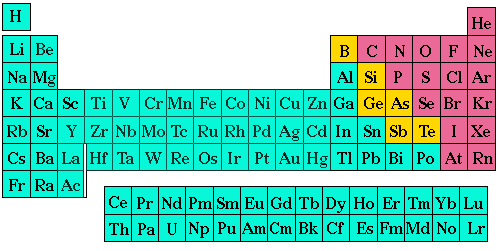
Chemical Nomenclature |
|
Does the compound contain a metal and a non-metal or a polyatomic ion? YES - NO |

| ammonium | NH4+ | acetate | C2H3O2- | |
| carbonate | CO3-2 | dichromate | Cr2O7-2 | |
| hydroxide | OH- | nitrate | NO3- | |
| phosphate | PO4-3 | sulfate | SO4-2 | |
| chlorate | ClO3- | cyanide | CN- |
| representative ion + one oxygen atom | ClO4- | perchlorate | |

| representative ion | ClO3- | chlorate |
| representative ion - one oxygen atom | ClO2- | chlorite | |
| representative ion - two oxygen atoms | ClO- | hypochlorite |